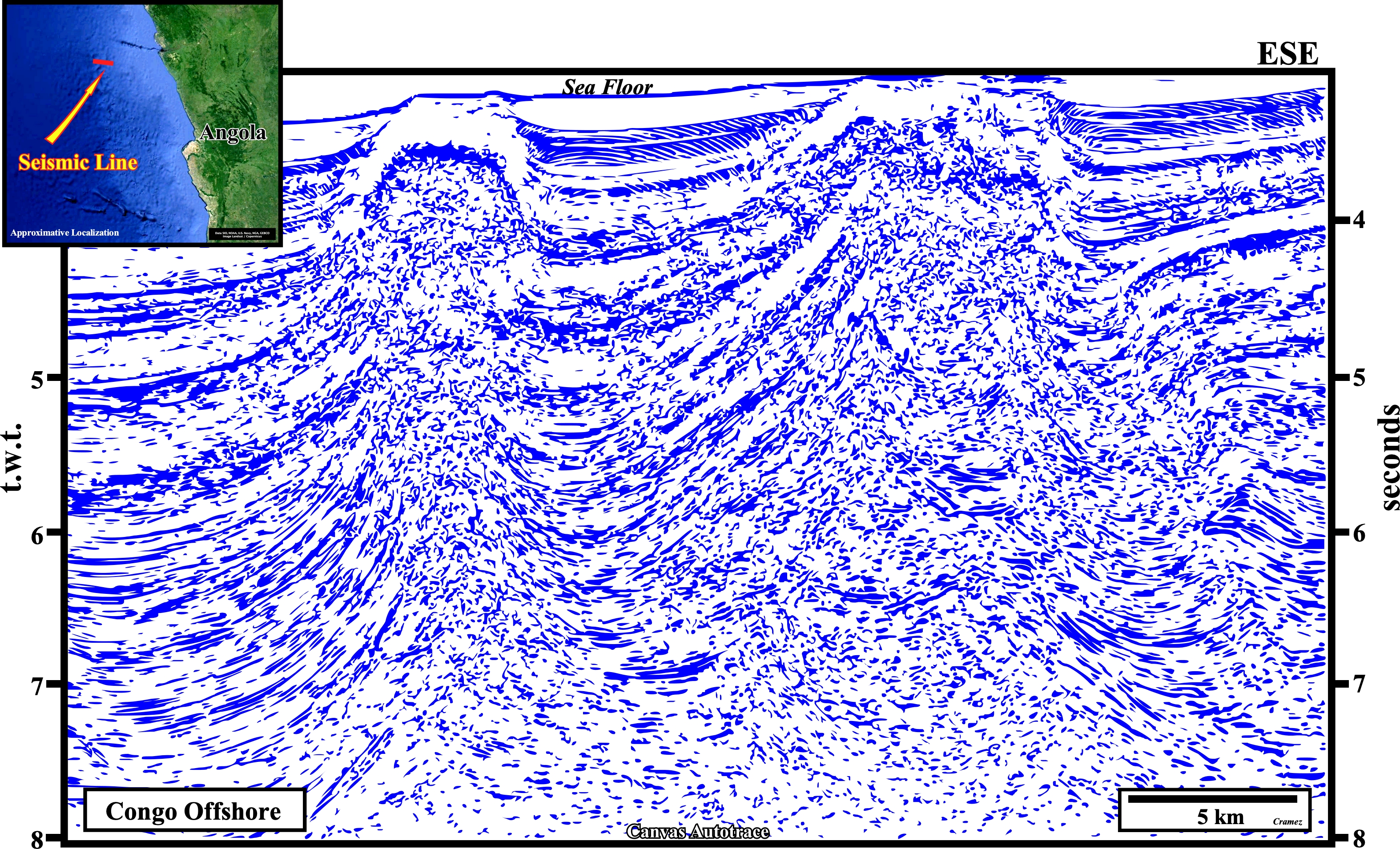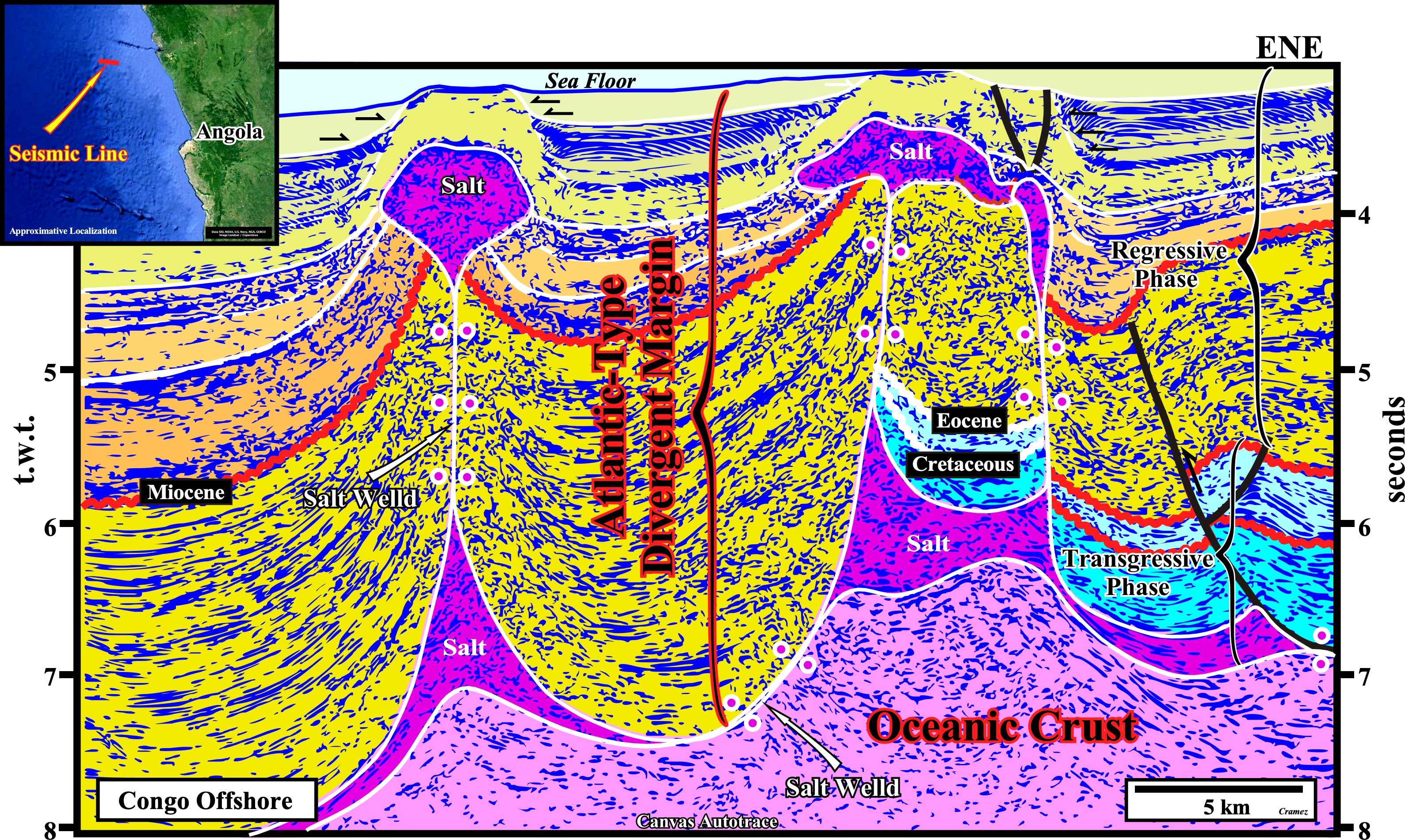

Potential Source-Rocks
Regressive Phase of the Continental Encroachment Cycle


Compared the previous tentative geological interpretation illustrated on Page 24, this Canvas autotrace is even more distal (almost 4 seconds t.w.t. of water depth). Also, here, the accommodation (space available for the sediments) induced by the lateral and vertical displacements of the salt (Aptian) allowed the formation of depocenters more than 4 seconds (t.w.t.) thick. If, in this sector, there is a generating petroleum sub-system , it can just be associated with these depocenters, because Cretaceous sediments are just present in right part of the autotrace. Several hypotheses can be advanced for this autotrace but for the autotrace of Page 24 well: (i) There are, at least, two compressional tectonic regimes (sedimentary shortenings) ; (ii) The first one was developed, in deep parts of the Atlantic-type divergent margin, as a counterpart of the shelf and slope extension responsible of the salt raft tectonics ; (iii) The second compressional tectonic regime, much more recent, which still seems to continue today, is, probably, associated with the decreasing continentward topography of the oceanic mountains (oceanic ridges) ; (iv) The last compressional tectonic regime creates large wavelength anticline structures, well marked on the Miocene unconformity (see also Page 24) and it is the mainly responsible of the squeezed salt domes with the formation secondary (vertical) salt weld separating allochthonous from autochthonous salt.
Send E-mails to carlos.cramez@bluewin.ch with comments and suggestions to improve this atlas.
Copyright © 2001 CCramez
Last update:
2022